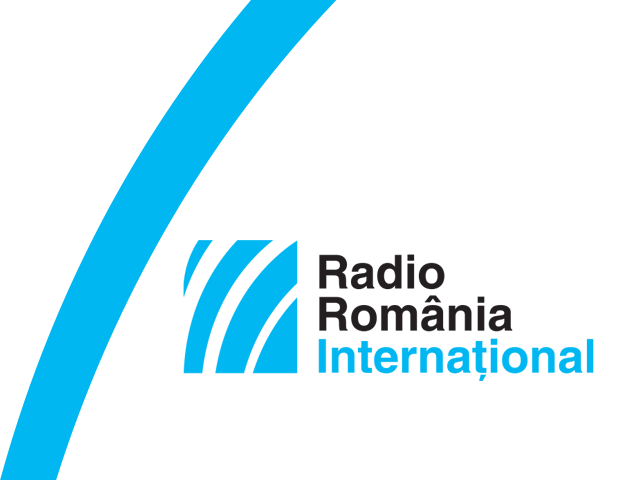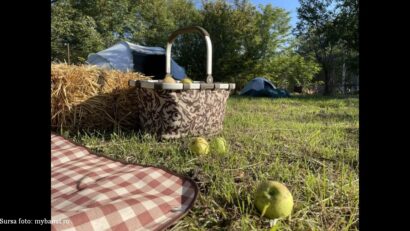A tour of the Communist period in Bucharest
The tour of communism in Bucharest involves visiting all those places that still bear witness to the so-called Golden Age

Daniel Onea, 31.08.2023, 14:00
Today we invite you to discover the capital of Romania through a special tour, which is very popular among foreign tourists. The tour of communism in Bucharest involves visiting all those places that still bear witness to the so-called Golden Age, which ended abruptly in December 1989. The Palace of the Parliament, the third largest administrative building in the world, according to the World Records Academy, or the Ceaușescu House, the residence of the former dictator of Romania, are just some of the tours objectives. Andreea Cosma is a specialized tour guide, and the tour she offers to tourists is comprehensive. In addition to various visits, information is provided about the daily life of Romanians, from a social, economic and cultural point of view.
Here is Andreea Cosma: First of all, I think that every foreigner should take this tour because it will help them understand the Romanians behavior and way of being. Like it or not, we are still influenced by the almost 50 years of communism. Romanians should also take this tour, especially those from the younger generation, who do not really receive information about this epoch at school. The tour aims at understanding the changes brought and the impact had by the communist regime not only in the case of Romania and Bucharest, but also in the case of the people. This is what we are focusing on. Some of the sights we see on the route are, of course, the Peoples House or the Palace of the Parliament, the Schitul Maicilor – the Mothers’ Hermitage Church to highlight the story of the transmuted churches from the communist era. The tour also includes a visit to an old grocery store on Apolodor Street and a stop at the headquarters of the former Political Police – the Securitate, currently the Bucharest Police headquarters. The tour ends in Revolution Square.
From an architectural point of view, the Palace of the Parliament remains one of the most controversial buildings in Romania. The building spans a surface of 365,000 square meters, ranks first in the world in the Book of Records in the category of administrative buildings for civil use, and third in the world respectively in terms of volume. It is also the heaviest and most expensive building in the world. The entire construction is the result of the effort of more than 100,000 people. Almost 20,000 workers were working in three shifts, 24 hours a day, during the peak of the construction period. For the construction, almost 100% Romanian materials were used. Andreea Cosma, our guide, recommends tourists, if they have time, to purchase the guided tour from inside the building. Visits should be booked 24 hours in advance, on the institution’s website, with the standard price standing at 60 lei (12 euros) for one adult.
Andreea Cosma: In the pedestrian tour, we tell people about the demolitions that took place to make way for the most important symbol of Ceausescus megalomania. We also tell people about the construction of over 360,000 square meters, achieved in approximately five years, reminding them that it is a building in progress, not yet completed. We also tell them about the supposed tunnels that exist under the People’s House. From there, we take tourists to see another interesting objective that connects us to the story of Elena Ceaușescu. The building used to be the House of Technology and Science, what is now the headquarters of the Romanian Academy. It was supposed to be a sort of office for Elena Ceausescu, who had very successfully graduated three years of schooling, and then finished her life with a PhD in chemistry, without doing the studies, of course. It is interesting, nonetheless, to see how the communist propaganda managed to show us how people from very poor backgrounds managed to reach the upper echelons.
The next objective was erected in the mid-1960s, known at the time as Spring Palace. It was expanded between 1970 and 1972. This was the residence of the dictator’s family. Various wood essences of various colors, from domestic sources, were used for the interior decorations. You can also see an impressive collection of paintings, as well as many manually manufactured tapestries and mosaics. The tour is in Romanian and English, and the standard fare is about 11 Euro.
Here is Andreea Cosma, a tour guide: “I always mention the Spring Palace. It is very interesting to visit. The main residence of the two Ceausescu dictators was turned into a museum, and it is very interesting to see their lifestyle. We go there and see the luxury and the opulence they lived in, by contrast with the rest of the population. The entire Primaverii, or Spring, neighborhood is worth taking in step by step, ideally with a guide that tells you the story of each house. Each has a story related to the family that resided there, and about the dynamic within each family, including their relationship with the Ceausescus.
Andreea Cosma, a tour guide, mentioned another building that stands witness to the Ceausescu period: the Dambovita Center, or Radio House, as it was referred to until 2015. The construction started in 1986 on the place where a horse race track used to be, and it was supposed to house the National History Museum of the Socialist Republic of Romania.
It is another story written during an era that many remember with sadness, but which today has become fascinating: “Since the tour is organized like a story, going through all the major changes that communism brought, describing its impact on our lives, with no exception, all tourists were impressed by the end. They understood better why we, Romanians, are the way we are, each with his or her individual experience, when it comes to relating to other Romanians. In terms of countries of origin, we had a very large number of people from the USA. This was a bit surprising to me. Up until the pandemic, there was not a single tour without at least one tourist from the UK. The situation changed last year. There was not a single tour without at least one tourist from the US. Otherwise, most are from the west of Europe, and very few from Asia, South America, and Africa.
The price of a Real Tour of Communism experience is between 18 and 24 Euro. The most expensive version is a private tour. Generally, tours are with the public, with 15 people at most, so that each tourist can be offered proper attention. (LS, CC)






























